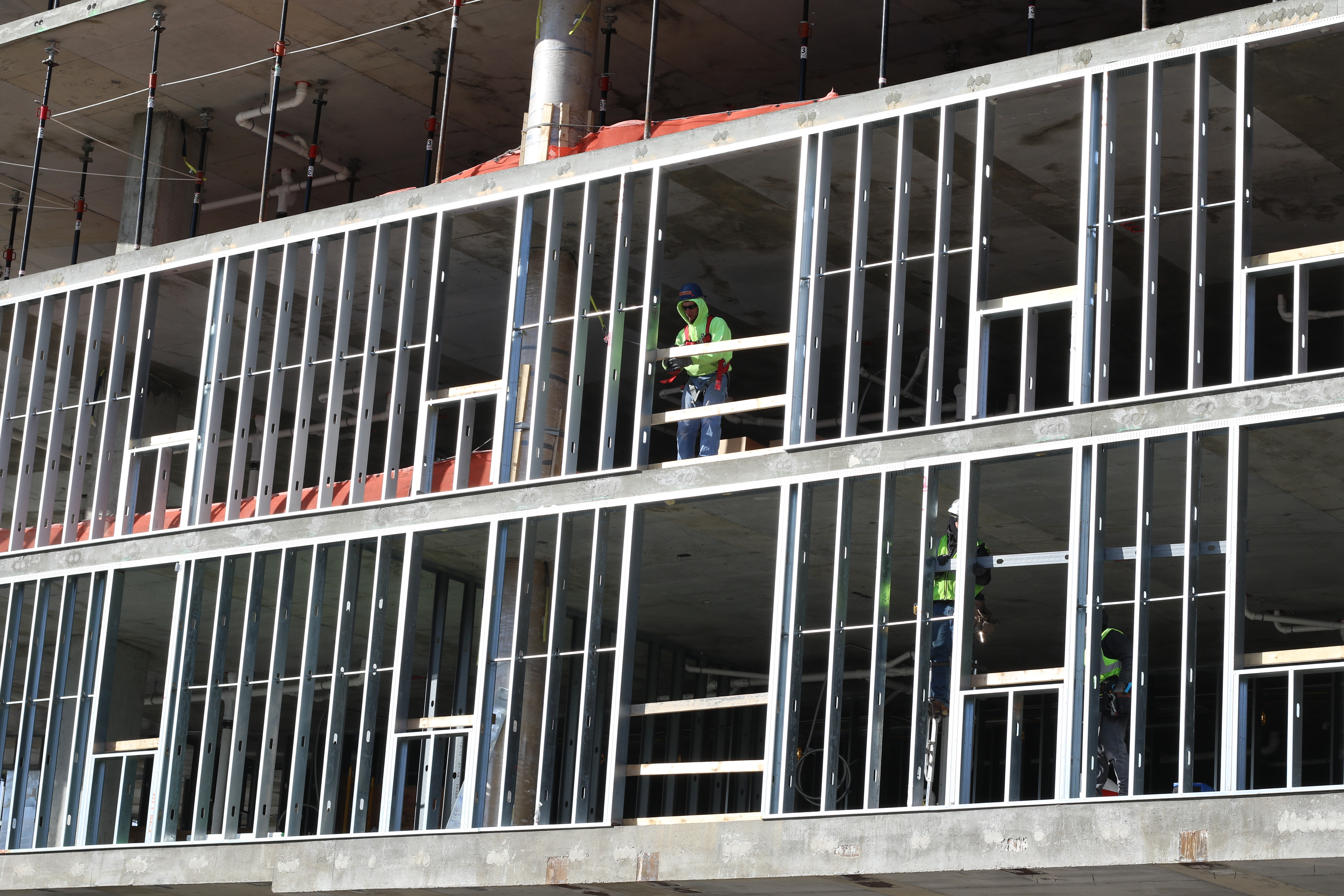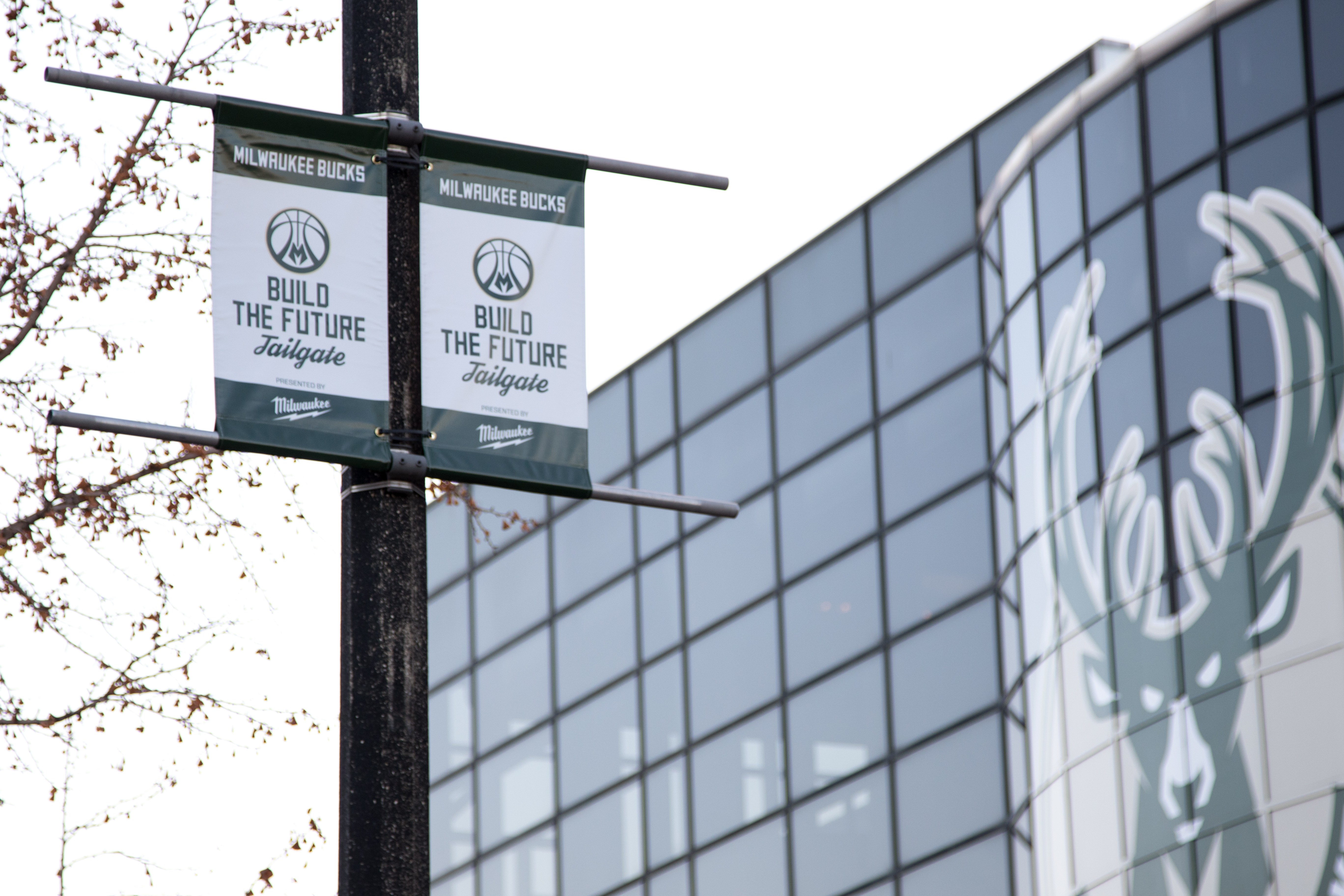Milwaukee and Madison Grow Up and Out
Sailing down the Milwaukee River back in 1848 when Wisconsin first became a state, the small, recently founded city of Milwaukee was just beginning to expand with an influx of German immigrants. Less than 100 miles away, Madison, along the shores of Lake Mendota and Lake Monona, was still just a small village in its infancy as the state capital.
These two cities have since transformed into the economic and metropolitan centers of the state, growing and expanding over the years. And yet these same pockets of land at the heart of their downtowns, where they were born hundreds of years ago, continue to be the places where major changes stand to dramatically alter the landscape.
In Milwaukee, the prospect of a new $500 million arena promises to revitalize an empty downtown lot. In Madison, massive new downtown housing projects and a potential new workforce center aim to bring affluent new residents to the city. But current residents in both cities and across the state ask: Is it worth the cost?
If you look out north from the BMO Harris Bradley Center, the current arena for the Milwaukee Bucks, you’ll see nothing more than a few parking lots and a few decrepit buildings and parking structures. By 2018, though, the Bucks hope the landscape will completely change.
This area, a part of the Park East Corridor, is the location slated for the new Milwaukee Bucks arena and surrounding development, which could include a new public entertainment plaza and areas for further commercial and parking space. This all-out transformation of a seemingly desolate section of downtown Milwaukee will be another massive addition to the ever-changing city.
City, county and state officials have all had their hands on the Bucks Arena deal, as funding from it is coming from the state, county and city governments. Jim Tarantino, the director of economic development for Milwaukee County, says the Park East Corridor location on which the arena will be built has been sitting vacant since 2002 when the Park East Highway was shut down.
“The Park East Corridor has been a 10-acre hole right in downtown, and it separates the neighborhoods north of downtown from downtown Milwaukee just like the freeway used to,” Tarantino says.
The north side of Milwaukee, Tarantino says, hasn’t seen the same amount of positive growth as Milwaukee’s lakefront area, and with this project, it will hopefully transform the near north side into a high growth area, with new grocery stores and medical centers.
Keeping the Bucks in Milwaukee, Tarantino says, is also something that’s a major point of pride for the people of Milwaukee.

Construction workers continue work on the Uncommon Apartment Building, a new luxury student apartment building opening next year.
Photo by Thomas Yonash.
“Basketball has the most diverse fan base and it appeals to not just a select few like hockey does, or football or baseball. It has a broad appeal across all races and income levels, so I think that’s really positive — that it’s not just a few downtown people that want to keep this NBA team here.”
Now, Tarantino is right — there are certainly others besides downtown residents who want to keep the Bucks in Wisconsin. That’s the whole point of why this new development is going into place. When the Bucks were sold to new owners last year, ESPN reported there was a provision in the deal that if a new arena deal for the Bucks was not in place by November 2017 — the NBA would buy the team back for $575 million and move it out of the city.
To make current fans happy and reinvigorate the fan base in Milwaukee and across the state, the new ownership group immediately got to work on proposals for a new arena. Now, after the long speculation process, there is a $500 million dollar deal in place for a new one. The only thing that nearly held it back is a pretty important factor: where the money will come from.
Current owners Wesley Edens and Marc Lasry, and former owner Herb Kohl, have agreed to pay $250 million of the deal, but the taxpayers of Wisconsin will pick up the rest.
This has left many around the state vastly upset, as with the latest budget passed by the state legislature, $250 million was cut from the public higher education system in Wisconsin, and K-12 education saw budget freezes and expansion in the state school voucher program, which could mean major hits for public school districts across the state.
While there has been intense opposition across the political spectrum about putting public funds toward the stadium, the local and state governments are going through with it. While the price for taxpayers is valued at $250 million, it will more than likely grow to nearly $400 million from interest rates. The city of Milwaukee will put forth $47 million dollars, the county will contribute $4 million dollars per year for 20 years and through the Wisconsin Center District, the state will pay $203 million, upsetting many citizens.
Now, head about 78 miles west and you’ll land on Madison’s isthmus, where large-scale housing projects have been popping up all over in the last several years, changing the dynamic of the city.
In the last several years, Madison itself has seen a vast skyline change across the city. The state Capitol building, once sitting high and mighty towering over the isthmus, now has some neighbors — apartment buildings looming over the surrounding area.
Mike Verveer, alderman for District 4 in the city of Madison, attributes the influx of building to the rise of Epic Systems, a healthcare management systems company with more than 9,000 employees, as well as other tech and biotech companies in the area.

Fans gather outside of the BMO Harris Bradley Center to enjoy live music and fresh food at the “Build the Future Community Tailgate” before the Bucks victory on Nov. 7.
Photo by Thomas Yonash.
“Many of these new Epic employees are in their 20s, many in their first job right out of college, and choose to live in downtown Madison. They have no interest in living in Verona, close to their workplace,” Verveer says. “They don’t mind the commute because they can take advantage of all the amenities downtown.”
Secondly, and perhaps more importantly, Verveer points to the huge drop in the vacancy rates across the city.
“Over the past several years, there has been, really, at [the vacancy rate’s] highest point, about a 2 percent vacancy rate in the 53703,” Verveer says.
This huge influx of housing has been important for the growing downtown area, but one thing Verveer says the downtown lacks is a large-scale corporate headquarters. This is where the current Judge Doyle Square proposal comes into play as well.
Judge Doyle Square is a location near the Capitol Square that was the proposed location for the new Exact Science headquarters, along with hotel rooms and public and private parking spaces.
Moving the headquarters of Exact Sciences downtown could not come at a better time, Verveer says, as we are seeing government jobs move out of the downtown.
“State jobs are leaving the downtown … and agencies moving in the next couple of years from the downtown to the west side is part of the Hill Farms development,” Verveer says. He believes that having a major corporate headquarters downtown will be a major game changer.
This plan, unfortunately, has fallen through, as Exact Sciences has decided not to move downtown, and instead, expand their current headquarters. This throws a wrench in the city’s plan, further adding to the problem of a huge influx in housing around the downtown area, without new large business growth or significant increases in affordable housing.
These changes to the state capital have faced all sorts of flak from longtime residents. Those who have called Madison home for a long period of time have seen the downtown district and their old hangout spots disappear, as a completely new, more affluent group of people moves into the city and changes what longtime residents called home.
Erika Otis, a lifelong Madison area resident, grew up near Rimrock Road and frequented the west side and downtown area, especially near campus and State Street. She remembers hanging out down by places like Concrete Park, the area at the end of the 500 block of State Street, where the upscale Tower Apartment building now stands.
Since all of this construction began, Otis thinks the city is catering to a new crowd vastly different from what she’s familiar with.
“They’re trying to make it down there more of an urban and high-class area,” Otis says.
While she understands the change from a business perspective, it’s bringing a new image to the city along with it.
“For the economic part of money making and development, sure, I suppose it’s good. It makes the people who are trying to make money, money,” she says. “But for people who used to hang out down there and have a nice place to go, that’s not there anymore. The nice shops that I used to go to aren’t there anymore, so I have no reason to go down there, and I know a lot of people who don’t go down there anymore.”
Besides changing the landscape of the area, this huge influx in more expensive housing has also led to a loss of more affordable housing downtown. Frank Staniszewski, the president of Madison Development Corporation, a nonprofit economic and real estate development company that focuses on affordable housing in Madison and Dane County, knows how important the need for it is.
“Housing is getting less and less affordable, which is causing people to either double up or move to pockets where there’s less quality housing or further out [in Dane County],” Staniszewski says. “There’s nothing wrong with living in Sun Prairie, Oregon, or any place surrounding Madison where the rents might be lower, but then the total cost of living is almost comparable … because if you work downtown, you have to maintain a car.”
Affordable housing in the downtown area, which he calls “de facto affordable,” is only affordable because of the conditions that the properties are in. These are the same places being bought by developers and demolished to make way for these high-end, market-rate apartments.
Verveer agrees that affordable housing is the number one crisis in Madison today, but doesn’t necessarily see it the same way with businesses downtown.
“There’s no doubt that all of these new downtown residents that are being accommodated in all of these new apartment buildings are an important boost to the State Street economy, and if it wasn’t for all of these new residents, I think we would see businesses suffering,” he says.
So, while government officials are convinced that all of this development is good, why don’t we see residents agreeing with them? Kurt Paulsen, professor of urban and regional planning at the University of Wisconsin-Madison, potentially has the answer.
“We like to joke that everybody wants growth and development, just not anywhere near them,” Paulsen says. “A lot of people see changes coming, and they are not thrilled to see their neighborhood changing.”
Changes are constantly happening within major urban centers. As Paulsen puts it, cities either grow outward, or grow up. This “growing up” is exactly what we’re seeing within both Madison and Milwaukee. While these projects have their drawbacks and problems that officials must address, these developments, in their minds, are what are best for the city and best for the future.
It can be hard for residents to see change happen to in their city. But Milwaukee’s changed a lot since the first groups of immigrants began to populate the city, and Madison has transformed from just a tiny little village between two lakes. In another five, 10 or 50 years, Madison and Milwaukee will both look much different than they currently do. It’s just a matter of how the people of this state, and the bureaucracy that runs it, work together to keep them growing up.

